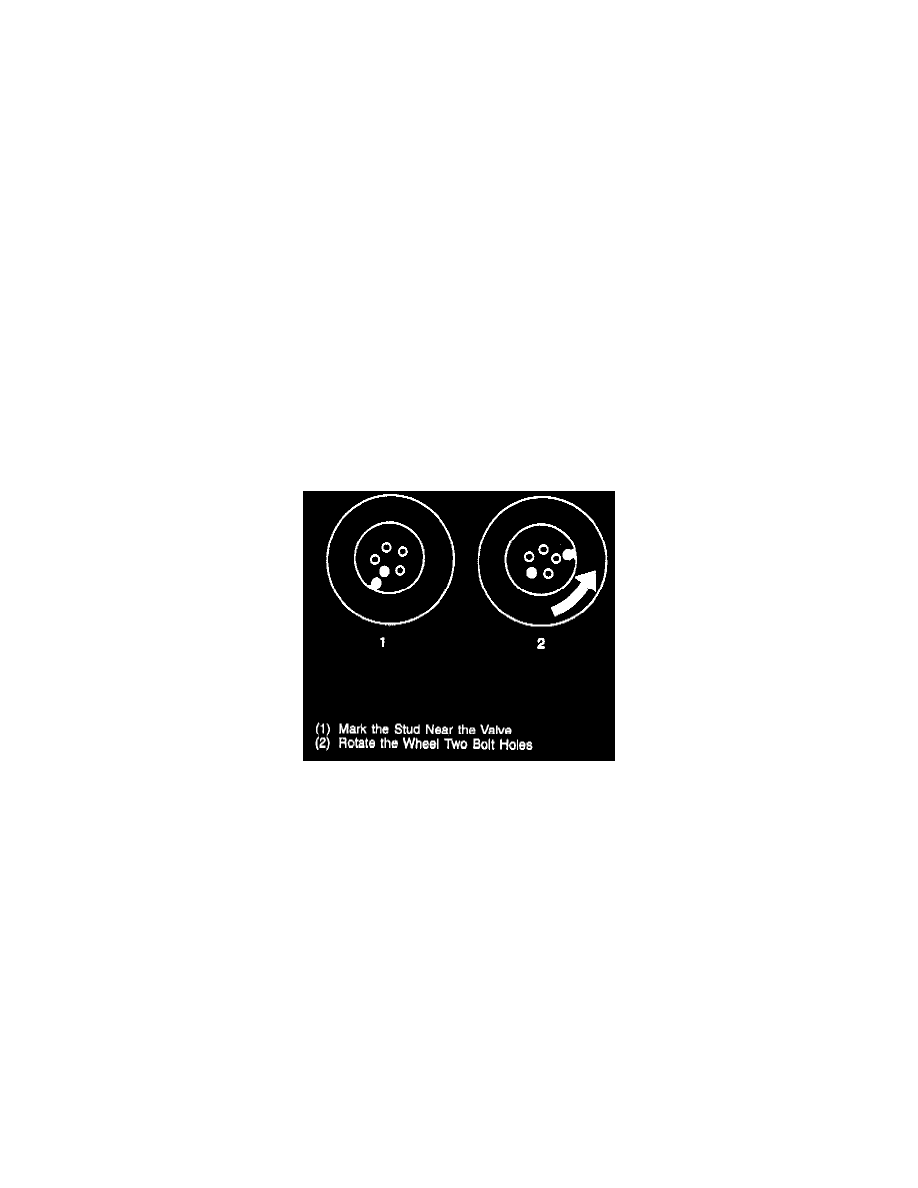G 1500 1/2 Ton Van V6-4.3L VIN W (1997)

Wheels: Service and Repair
Balancing Tire and Wheel
Balancing
DESCRIPTION
Balancing factory aluminum wheels requires special polyester coated clip-on type balance weights. These weights are designed to fit over the thicker
rim flange of the aluminum wheel. They also provide a much better appearance and will not discolor, corrode or damage the wheel.
Important: When installing the polyester coated weights, care must be used so the polyester coating does not crack. It is recommended that a
teflon-coated hammer be used.
NOTICE: Do not scratch the clear coating on aluminum wheels with wheel weights, wheel balancing techniques, or wheel balancing tools. Failure to
follow proper procedures could cause the aluminum wheel to corrode and the clear coating to peel from the wheel.
ADHESIVE WHEEL BALANCE WEIGHT INSTALLATION
1. Wipe the wheel balance weight attachment area with a mixture of half isopropyl alcohol and half water. A clean cloth or paper towel must be used
for this operation.
2. Dry the attachment area with hot air. The surface of the wheel should be warm to the touch.
3. The adhesive backing on the wheel balance weights must be warmed to room temperature.
4. Remove the tape from the back of the weights. Do not touch the adhesive surface.
5. Apply the wheel balance weights and press on with hand pressure.
6. Secure the wheel balance weights with a 70-110 N force applied with a roller.
Description
There are two types of tire and wheel balancing; static and dynamic. Static imbalance occurs when a disproportional amount of weight and mass is
concentrated on a small area on the tire and wheel. This condition causes a vibratory-type pounding action that is commonly referred to as tire tramp or
wheel hop.
